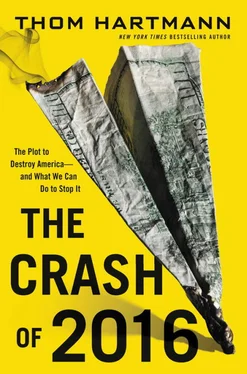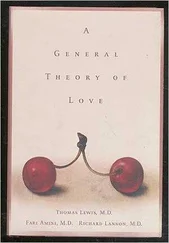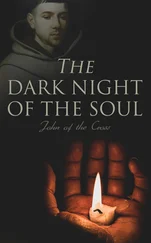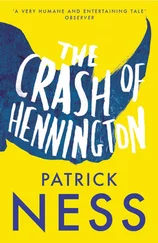The second was the generational epochs—blocks of time during which generations overlap and a major transfer of power is made from one to another, along with a period of time long enough for a major change in our understanding of government and a recalibration of our worldview.
Jefferson and his contemporaries spoke and wrote often about the obligations of each generation to its heirs, and about the political crime of any generation placing shackles (financial or legal) on future generations.
Jefferson wrote to his protégé, James Madison, the year the Constitution was ratified and our modern nation birthed: “The question, whether one generation of men has a right to bind another… is a question of such consequences as not only to merit decision, but place also among the fundamental principles of every government.” 109No single generation, he wrote, has the right to saddle the next with problems or debts, and it should be obvious “that no such obligation can be transmitted” from generation to generation.
Laying out his thinking on the issue, Jefferson continued: “I set out on this ground, which I suppose to be self evident, that the earth belongs in usufruct [common ownership] to the living; that the dead have neither powers nor rights over it. The portion occupied by any individual ceases to be his when himself ceases to be, and reverts to the society.”
Jefferson’s logic that no person or generation should be able to bind the next one was one of his core beliefs throughout his life, and shared by most of his contemporaries. He added, “For if he could, he might during his own life, eat up the usufruct [commons] of the lands for several generations to come; then the lands would belong to the dead, and not to the living, which is the reverse of our principle.”
But what was most revolutionary about Jefferson’s thinking on this was the idea of generational revolutions —that the nation itself must fundamentally change roughly once every biological or epochal generation, and that even that wouldn’t prevent larger periodic political transformations of the nation. These were, he believed, not just ideals but a basic force of nature. He wrote:
On similar ground it may be proved, that no society can make a perpetual constitution, or even a perpetual law. The earth belongs always to the living generation: they may manage it, then, and what proceeds from it, as they please, during their usufruct [shared ownership]. They are masters, too, of their own persons, and consequently may govern them as they please. But persons and property make the sum of the objects of government. The constitution and the laws of their predecessors are extinguished then, in their natural course, with those whose will gave them being.
Jefferson believed that even the laws enshrined in our Constitution came with a time limit, and that once the generation that wrote those laws passed on out of power, those laws must be rewritten by the new generation, or at least every second generation.
“Every constitution, then, and every law, naturally expires at the end of thirty-four years,” Jefferson wrote. “If it be enforced longer, it is an act of force, and not of right. It may be said, that the succeeding generation exercising, in fact, the power of repeal, this leaves them as free as if the constitution or law had been expressly limited to thirty-four years only.”
A revolution every twenty to thirty-four years? Could Jefferson have actually been proposing—or predicting—that?
In fact, yes.
Jefferson stressed the need for every generation to essentially produce a revolution that would turn the wheel of America forward into the new epoch. He arrived at this conclusion by understanding the weaknesses inherent in the Constitution when it was first drafted, and the need that each new generation must continue to perfect it, or at least adapt it to respond to changing times.
Jefferson noted the absurdity of a rigid Constitution—or at least an interpretation of that Constitution—that does not change as the nation grows and times change, saying, “We might as well require a man to wear still the coat which fitted him when a boy, as civilized society to remain ever under the regimen of their barbarous ancestors.… Let us follow no such examples, nor weakly believe that one generation is not as capable as another of taking care of itself.”
Looking back, Jefferson’s theory of revolution holds up.
The young men of the Revolution of 1776 had become the old establishment of 1800. But the young people of the nation were dissatisfied with how things were going under the presidency of John Adams (elected in 1796), as Adams had steadily been moving the government in a more and more authoritarian and monarchical direction.
The result was that young people who voted in the election of 1800 fostered what historians refer to as “The Second American Revolution of 1800,” the first peaceful transfer of power from one party (Adams’s Federalists) to another (Jefferson’s Democratic Republicans, today called the Democratic Party) of a major nation in history. Jefferson called it a “revolution as significant” as the one of 1776.
This cycle then repeated over and over again, with each new generation bringing with it a new “revolution.”
The young people of 1800 came to power in the 1820s, and the election of Andrew Jackson in 1828 was again revolutionary, in that he campaigned on a platform of overturning the existing order. In 1832, he vetoed a renewal of the charter of the Second Bank of the United States, took on the “selfish” “rich and powerful,” and humbled the banksters. He was the people’s hero, and it was a revolution against the establishment that had rigidified thirty years after the revolution of 1800.
Roughly thirty years later, the children of Jackson’s revolution fought the Civil War under Abraham Lincoln.
The next generation came of age and power in the 1880s, while America was once again facing a grassroots revolution, this one against the Industrial Age’s rise of the Robber Barons (railroads, steel, oil, finance) in a period we often refer to as “the Gilded Age.”
The children of President Cleveland’s generation watched, as they grew up, the assassination of an incredibly corrupt President McKinley, which turned power over to his vice president, Theodore Roosevelt. By 1907, the revolution was on again, and Roosevelt pushed through Congress the Tillman Act, which not only made it an explicitly criminal act for a corporation to give money or any other form of support to candidates for federal office but even provided for corporate officers and directors themselves to individually go to jail for the election-influencing crimes of their companies.
A generation later, in 1932, revolution was brewing. Forty-five thousand veterans of World War I were occupying land from the White House Lawn to the Potomac River, demanding that their bonus coupons for service in the war, redeemable in 1945, be cashed in immediately so they could deal with the Great Depression. The relatively moderate governor of New York, a man born of wealth and firmly part of the establishment, Franklin D. Roosevelt, stepped into the White House. And, recognizing the revolutionary times, Roosevelt had by 1936 become such a revolutionary himself that his opponents among the banking and industrial class were openly using the media to call him a communist and a traitor; they even organized an unsuccessful coup d’état against him.
FDR’s revolution was resolved with Roosevelt’s death and the end of World War II in 1945. So as the wheel of history turned, inevitably there came the next generation’s revolution, the one of the 1960s.
The tenth generational revolution in America, led by Ronald Reagan and a new batch of Economic Royalists, was promoted as a revolution against the “free love” and “tune in, turn on, and drop out” ethos of the hippies. But at its core it was a corporate revolt, following an outline drawn up by Lewis Powell (as mentioned previously in chapter 2) against the rising profiles of Rachel Carson, Ralph Nader, and their unrelenting and successful work regulating big business.
Читать дальше












